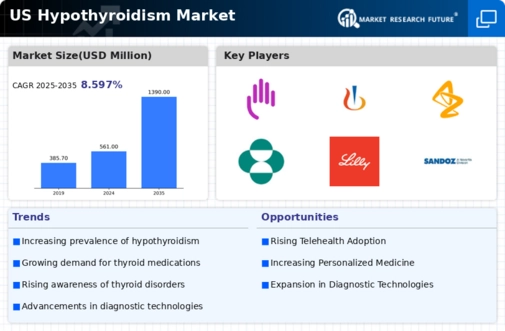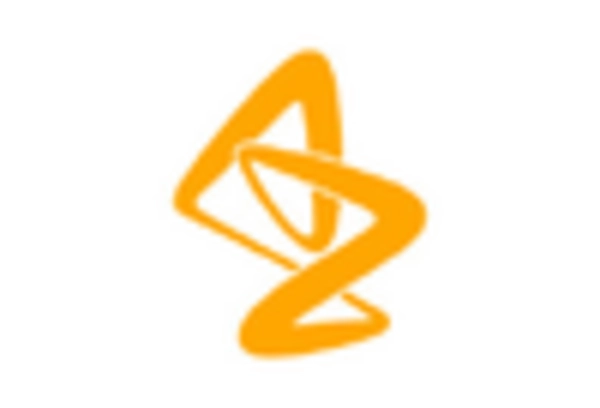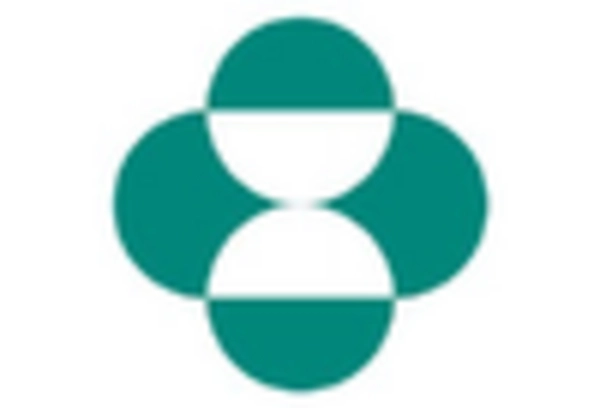Rising Healthcare Expenditure
The upward trend in healthcare expenditure in the US is a notable driver for the hypothyroidism market. With healthcare spending projected to reach $6 trillion by 2027, there is a growing investment in medical research, treatment options, and healthcare infrastructure. This increase in funding is likely to facilitate the development of new therapies and improve access to existing treatments for hypothyroidism. Additionally, as patients are willing to invest more in their health, the demand for specialized care and innovative treatment solutions is expected to rise. Consequently, the hypothyroidism market stands to benefit from this expanding financial commitment to healthcare.
Advancements in Diagnostic Techniques
Innovations in diagnostic methodologies are significantly impacting the hypothyroidism market. The introduction of more sensitive and specific tests, such as high-sensitivity thyroid-stimulating hormone (TSH) assays, has improved the accuracy of hypothyroidism diagnoses. These advancements facilitate earlier detection, which is essential for effective management of the condition. Furthermore, the integration of point-of-care testing and telemedicine is enhancing access to diagnostic services, particularly in underserved areas. As a result, the hypothyroidism market is expected to benefit from increased testing rates and subsequent treatment initiation, ultimately leading to better patient management and outcomes.
Increasing Prevalence of Hypothyroidism
The rising incidence of hypothyroidism in the US is a crucial driver for the hypothyroidism market. Recent estimates suggest that approximately 4.6 % of the US population aged 12 and older has hypothyroidism, with a higher prevalence among women. This growing patient population necessitates enhanced diagnostic and therapeutic options, thereby stimulating market growth. As awareness of thyroid disorders increases, more individuals seek medical attention, leading to higher demand for treatment options. The hypothyroidism market is likely to expand as healthcare providers focus on early detection and management of the condition, which could potentially improve patient outcomes and reduce healthcare costs associated with untreated hypothyroidism.
Increased Focus on Preventive Healthcare
The shift towards preventive healthcare is influencing the hypothyroidism market. Healthcare providers are increasingly emphasizing the importance of regular screenings and early intervention for thyroid disorders. This proactive approach is likely to lead to higher rates of diagnosis and treatment initiation among at-risk populations. Moreover, public health campaigns aimed at educating individuals about the symptoms and risks associated with hypothyroidism are expected to contribute to increased awareness and demand for healthcare services. As a result, the hypothyroidism market may experience growth driven by a more informed patient population seeking preventive care and management options.
Growing Demand for Thyroid Hormone Replacement Therapy
The demand for thyroid hormone replacement therapy is a significant driver in the hypothyroidism market. Levothyroxine, the most commonly prescribed medication for hypothyroidism, accounts for a substantial share of the market. In 2023, the market for levothyroxine was valued at approximately $2.5 billion in the US, reflecting the critical need for effective treatment options. As more individuals are diagnosed with hypothyroidism, the demand for these therapies is likely to rise. Additionally, the development of new formulations and delivery methods, such as combination therapies, may further enhance treatment adherence and patient satisfaction, thereby driving market growth.

















Leave a Comment